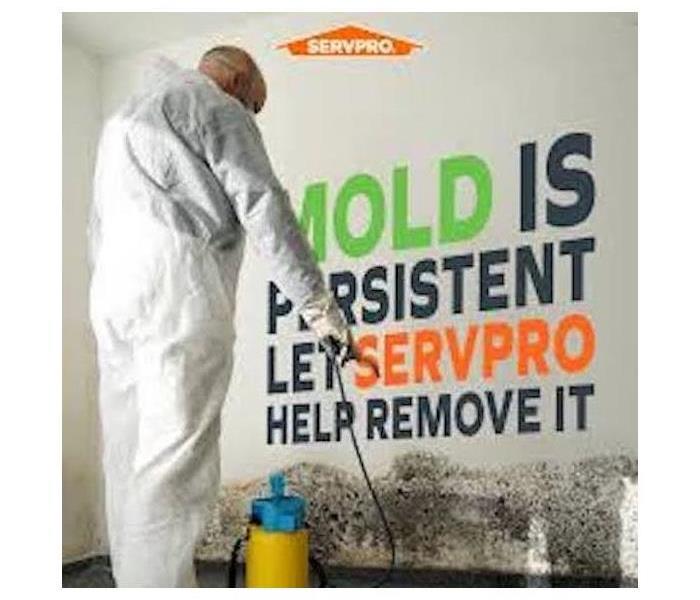The Link Between Water Damage and Mold | SERVPRO of Carbondale/Marion
11/1/2023 (Permalink)
Water damage and mold growth share an intricate relationship that often goes unnoticed until it's too late. As professionals in the restoration industry, SERVPRO of Carbondale/Marion is well-acquainted with the subtle dance between water and mold, and how one can inevitably lead to the other.
The Silent Culprit
Water damage is like an uninvited guest that arrives unannounced, leaving a trail of destruction in its wake. Whether it's a burst pipe, a leaking roof, or a flooded basement, water intrusion can permeate every nook and cranny of a property. Little do homeowners realize that this moisture provides the perfect breeding ground for mold spores, setting the stage for a symbiotic relationship that can turn into a homeowner's nightmare.
Learning About Mold
Mold is a resilient organism, lurking in the shadows and thriving on moisture and organic materials. As water infiltrates a space, it becomes a catalyst for mold spores to awaken from their dormant state. Mold growth typically begins within 24-48 hours of water exposure, making swift action imperative to prevent a small water issue from escalating into a full-blown mold infestation.
The Domino Effect: How Water Damage Paves the Way for Mold
Moisture as a Catalyst: Water creates an environment conducive to mold growth. Mold spores, omnipresent in the air, settle on damp surfaces and begin their reproductive cycle.
Building Materials as a Buffet: Mold feeds on cellulose-rich materials present in walls, ceilings, and floors. As water saturates these materials, it provides sustenance for mold to flourish.
Humidity as an Accelerant: Lingering moisture increases indoor humidity, creating an atmosphere where mold can thrive. Poor ventilation exacerbates the issue, trapping humid air and creating pockets of ideal conditions for mold colonization.
SERVPRO's Perspective: Nipping the Issue in the Bud
SERVPRO of Carbondale/Marion understands the urgency of addressing water damage promptly to curb mold growth. Through a multi-faceted approach, our experts tackle both the visible and invisible aspects of water damage:
Rapid Water Extraction: Utilizing state-of-the-art equipment, SERVPRO swiftly removes standing water, preventing further saturation of building materials.
Thorough Drying Processes: Our technicians employ advanced drying techniques to eliminate residual moisture, ensuring a dry environment that inhibits mold proliferation.
Mold Remediation Expertise: In the unfortunate event that mold has taken hold, SERVPRO of Carbondale/Marion specializes in safe and effective mold remediation. This involves the identification and removal of mold-infested materials, thorough cleaning, and preventative measures to impede future growth.
Preventative Measures: Guarding Against Future Woes
SERVPRO of Carbondale/Marion emphasizes the importance of preventative measures to break the cycle of water damage and mold growth:
Regular Inspections: Routine inspections can detect potential water issues before they escalate. Identifying and repairing leaks promptly can thwart mold's attempts to establish a foothold.
Proactive Maintenance: Addressing maintenance issues, such as roof leaks and plumbing problems, can prevent water damage from occurring in the first place.
Humidity Control: Proper ventilation and humidity control are crucial in mold prevention. SERVPRO recommends the use of dehumidifiers in damp areas to maintain optimal indoor humidity levels.
Conclusion: A Proactive Approach for a Mold-Free Tomorrow
In the intricate dance between water damage and mold growth, SERVPRO of Carbondale/Marion stands as a guardian, offering insights and solutions to break the cycle. By understanding the symbiotic relationship between these two adversaries, homeowners can take proactive measures to safeguard their properties and ensure a mold-free environment. Remember, in the battle against mold, time is of the essence, and SERVPRO of Bloomington is here to lend a helping hand, ensuring that water damage doesn't pave the way for mold infestation.





 24/7 Emergency Service
24/7 Emergency Service
